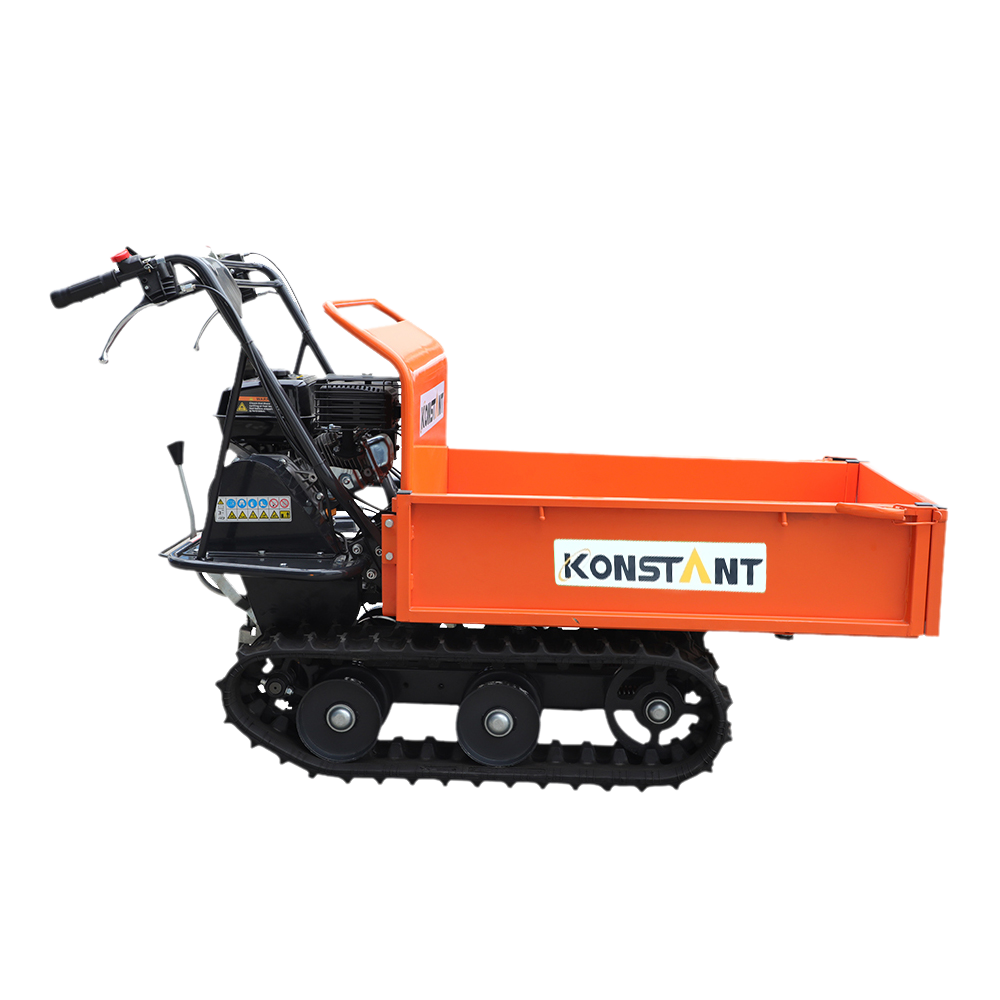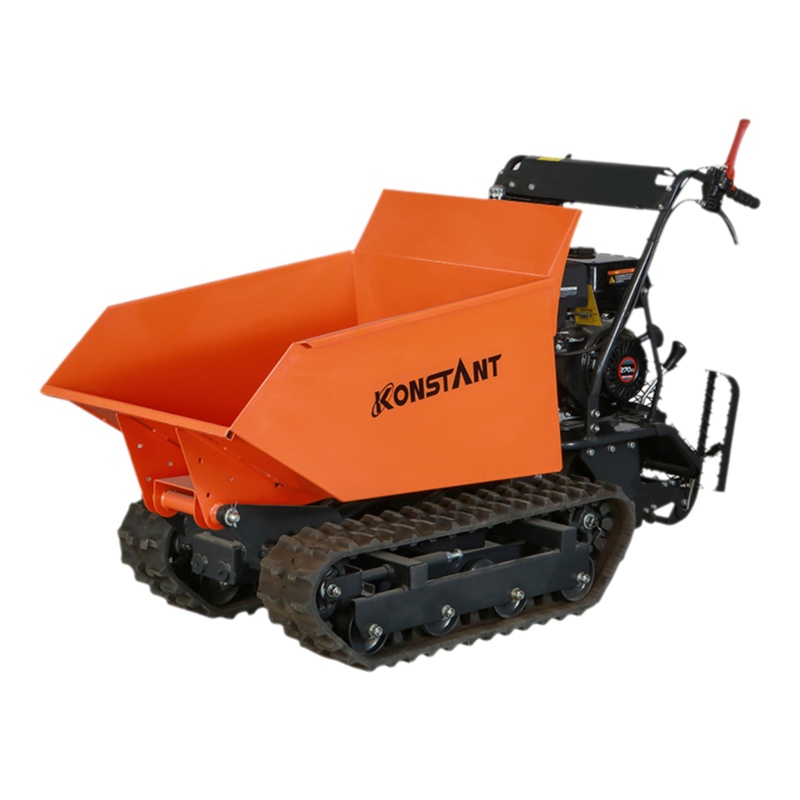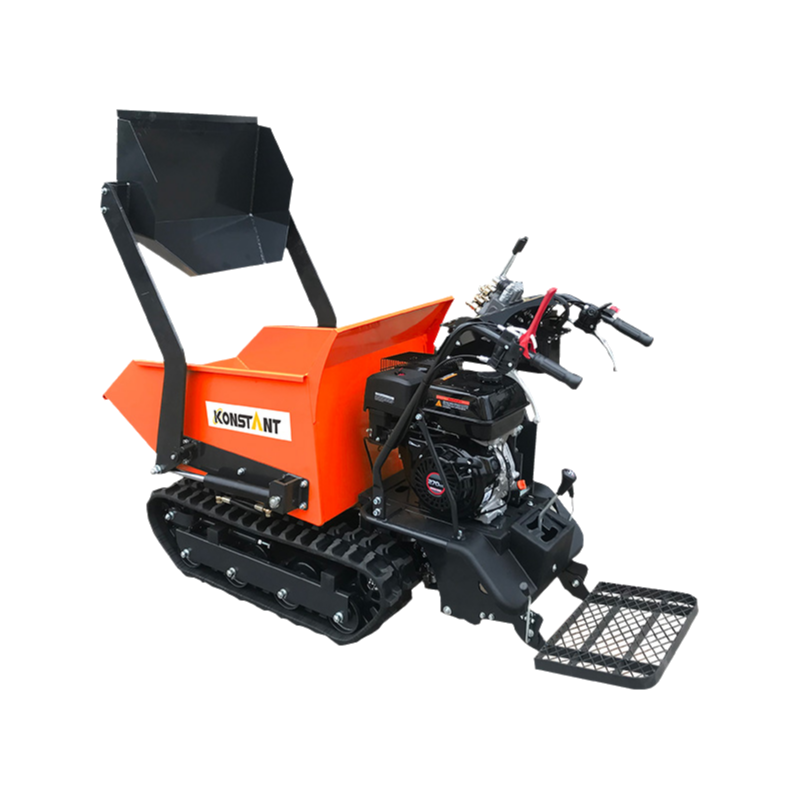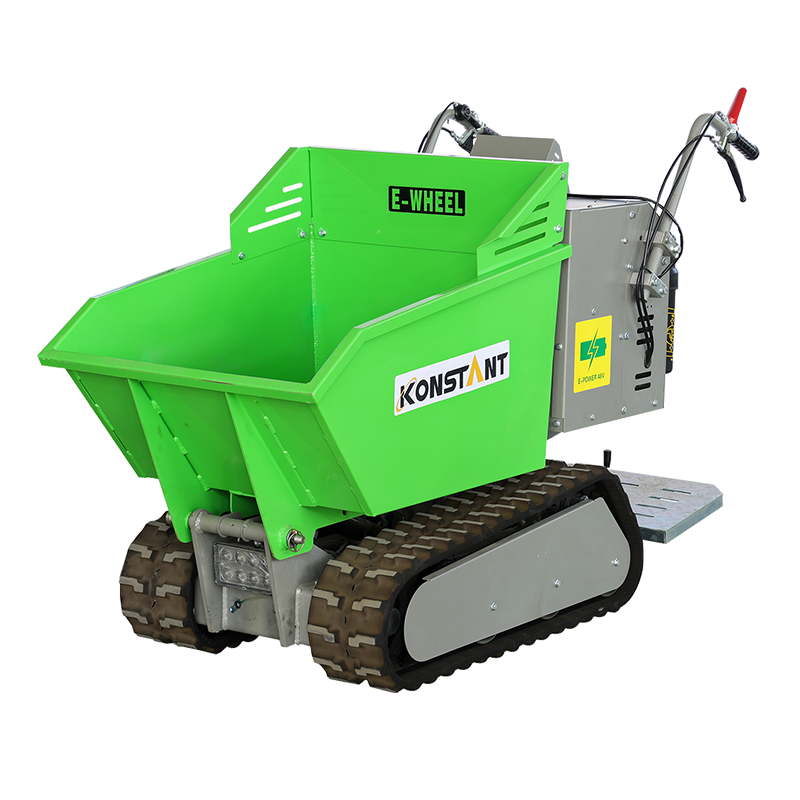Provide you with the latest enterprise and industry news
Why Is a Garden Loader Vital for Modern Landscaping Projects
Posted by Admin
What Makes a Garden Loader Essential for Modern Landscaping Projects
In modern landscaping, efficiency and adaptability are key to achieving practical and aesthetic outdoor results. Whether applied in residential gardens or larger landscape developments, the Garden Loader plays an important role in improving workflow and productivity. It supports a wide range of outdoor tasks, turning complex operations into smooth and manageable work.
The Growing Demand for Multifunctional Equipment
Landscaping today involves more than planting or soil preparation. Projects often require moving heavy materials, cleaning debris, and creating level surfaces. A compact and flexible loading machine can simplify these processes, saving both time and labor.
By reducing manual effort, it allows operators to focus more on the creative and structural aspects of their projects.
| Task | Challenge | Machine Benefit |
|---|---|---|
| Moving soil | Heavy loads | Reduces strain and improves speed |
| Leveling surfaces | Uneven terrain | Enables smoother and more precise ground work |
| Clearing waste | Repeated handling | Increases efficiency and cleanliness |
This adaptability makes such equipment a valuable companion for both professionals and homeowners engaged in garden maintenance.
How Modern Machinery Supports Sustainability
Sustainable landscaping continues to influence equipment design. Many current solutions integrate eco-conscious systems that lower emissions and reduce energy use. By incorporating these technologies, outdoor work becomes more environmentally responsible.
Electric and hybrid options also help reduce noise levels, which benefits community gardens and residential neighborhoods. The shift toward sustainability reflects a broader effort to combine performance with ecological awareness.
Safety and User Comfort in Outdoor Work
Safety remains a top priority in any landscaping environment. Modern machinery focuses on stable operation, balance, and simplified control to prevent workplace accidents. With well-designed handling systems, operators can manage materials more securely across various terrains.
Additionally, ergonomic controls and flexible attachments make daily use easier for both new and experienced users. These advancements contribute to higher comfort and reduced fatigue during long working hours.
Technological Progress in Compact Loaders
Recent innovation has brought intelligent systems into outdoor machinery. Hydraulic precision, adjustable components, and energy management functions enhance usability while lowering maintenance needs. Such developments not only improve overall operation but also extend service life.
Automation and smart sensors are gradually finding their way into landscaping tools, offering greater control and predictability in daily work.
Selecting the Right Equipment for Your Project
Choosing suitable outdoor machinery depends on project scale, material type, and environmental conditions. Compact tools fit smaller yards or garden spaces, while larger models may serve better in construction-based landscaping.
Before purchasing, it is wise to consider compatibility with existing tools, ease of maintenance, and availability of after-sales support. This ensures long-term reliability and consistent performance.
Supporting Modern Landscaping Needs
Modern outdoor projects rely on equipment that balances functionality, sustainability, and safety. The right machinery can simplify material handling, encourage responsible practices, and enhance overall efficiency. As landscaping continues to evolve, tools like compact loaders will remain central to creating well-organized and eco-friendly environments.
Why Compact Garden Loaders Are Changing Small-Scale Construction and Farming
Small-scale projects often face challenges that larger operations may overlook. Limited space, uneven terrain, and the need for versatile handling make traditional equipment less practical. Compact garden loaders have emerged as practical solutions, offering mobility, adaptability, and efficiency for a variety of tasks in construction and agricultural settings.
Enhancing Productivity in Tight Spaces
One of the main advantages of these machines is their ability to operate in confined areas. Residential renovations, small farm plots, and urban gardening often involve limited access points where standard machinery cannot reach. By providing maneuverability in tight spaces, these loaders reduce manual labor and accelerate material transport.
| Task | Challenge | Loader Advantage |
|---|---|---|
| Soil relocation | Narrow paths | Access small spaces with ease |
| Material stacking | Limited yard area | Efficiently move and organize materials |
| Debris clearing | Restricted corners | Improves cleanup speed |
Such versatility makes them suitable for both seasonal and year-round projects, allowing operators to complete tasks more efficiently.
Multi-Purpose Attachments for Versatility
Modern compact machines are designed to support multiple attachments, from buckets to forks and even small plows. This adaptability allows a single piece of equipment to perform different operations, including moving soil, transporting feed, or lifting construction materials.
By reducing the need for multiple machines, operators save on costs, storage space, and maintenance, all while maintaining reliable functionality across tasks.
Reducing Environmental Impact
Eco-conscious practices are increasingly influencing equipment design. Compact loaders often consume less fuel or energy than larger alternatives, and electric or hybrid models are becoming more common. These options minimize emissions and noise pollution, which is especially important for farms near residential areas or public spaces.
Sustainable operation also aligns with resource management goals, helping small-scale operators balance productivity with environmental responsibility.
Supporting Safety and Operator Comfort
Operating in tight or uneven terrain requires machines that are stable and easy to control. Modern compact loaders emphasize balance, low center of gravity, and ergonomic control layouts. These design features reduce the risk of tipping, minimize operator fatigue, and improve precision when handling sensitive loads like plants or building materials.
Safe handling systems, combined with responsive attachments, allow operators to work confidently, even in challenging conditions.
Cost-Effective Maintenance and Longevity
Small-scale operators benefit from machinery that is easy to maintain and durable. Loaders with modular components and accessible service points simplify cleaning, lubrication, and minor repairs. Reduced downtime ensures that projects remain on schedule without incurring excessive maintenance expenses.
Furthermore, robust material choices for frames and hydraulic systems extend service life, providing reliable performance over multiple seasons.
Adapting to Varied Tasks in Agriculture and Construction
Compact loaders are increasingly popular among small farms, urban landscapers, and cottage industries. Their flexibility allows operators to manage soil preparation, transport crops, deliver construction materials, or even assist in waste removal. This all-in-one approach reduces reliance on multiple machines, optimizing both efficiency and workspace.
Driving Efficiency and Versatility
The rise of compact garden loaders illustrates a shift in small-scale operations toward multi-functional, adaptable, and eco-conscious equipment. By combining maneuverability, attachment versatility, and sustainable operation, these machines support a broad range of construction and agricultural tasks. For operators managing limited space or diverse projects, this type of loader provides practical solutions that enhance productivity, safety, and cost efficiency.
How to Choose a Garden Loader That Fits Different Outdoor Tasks
Selecting the right equipment for outdoor work is crucial for efficiency, safety, and overall productivity. A loader designed for varied tasks can reduce manual labor, streamline operations, and adapt to changing requirements in landscaping, gardening, or small construction projects. Understanding how different features align with specific activities helps operators make informed choices.
Identify the Types of Tasks You Handle
Before choosing a machine, assess the nature of the work. Will it involve moving soil, carrying mulch, transporting materials, or assisting in minor construction tasks? Different activities place different demands on equipment in terms of load capacity, maneuverability, and stability. Mapping out the tasks ensures that the chosen loader supports everyday work as well as occasional heavier jobs.
| Task Type | Required Feature | Key Consideration |
|---|---|---|
| Soil or gravel movement | Load capacity | Check bucket size and strength |
| Plant transport | Smooth handling | Adjustable speed and gentle lifting |
| Construction support | Agility | Compact frame to navigate tight areas |
Consider the Terrain and Working Environment
Outdoor work often occurs on uneven surfaces, slopes, or soft ground. Machines with adaptable traction, wide wheels, or stability-focused design perform better across diverse terrains. Understanding the conditions ensures consistent operation and reduces the risk of tipping or slippage. For gardens or public spaces, quieter and low-emission models may be preferred to minimize disruption.
Evaluate Versatility and Attachments
A flexible machine allows operators to handle multiple tasks efficiently. Loaders with interchangeable attachments, such as forks, buckets, or plows, can easily adapt to seasonal or varied work requirements. This flexibility reduces the need for multiple tools, saves storage space, and increases overall productivity.
Focus on Comfort and Safety
Operator comfort is a key factor for prolonged work. Look for features such as intuitive controls, clear visibility, and ergonomic seating to reduce fatigue. Stability mechanisms, anti-slip platforms, and load limit indicators contribute to safe handling. Comfortable, easy-to-use machines allow for more precise operation and less strain over time.
Maintenance and Durability
A reliable loader should be simple to maintain. Accessible service points, durable construction, and components resistant to wear help reduce downtime. Regular inspections, lubrication of moving parts, and proper cleaning extend the lifespan and maintain safety. Choosing a machine that balances performance and ease of maintenance ensures consistent output and reduced long-term costs.
Match Capacity to Workload
Selecting a loader with appropriate size and lifting capacity ensures efficiency without overtaxing the machine. For frequent, lighter tasks, a smaller frame may suffice, whereas occasional heavier jobs may require a slightly larger capacity. Evaluating work patterns helps in choosing a machine that can handle daily operations comfortably.
Integration with Existing Equipment
For operations using additional tools like wheelbarrows, garden tractors, or trailers, compatibility is important. Machines that can work seamlessly with other equipment streamline workflows, reduce manual effort, and allow smoother transitions between different outdoor tasks.
Aligning Features with Outdoor Needs
Choosing a loader for varied outdoor tasks involves careful consideration of activity type, terrain, attachments, and maintenance requirements. Versatile and durable machines enhance efficiency, support safe operation, and provide reliable performance across landscaping, gardening, and small-scale construction work. By matching the equipment's capabilities with actual requirements, operators can achieve consistent results while minimizing effort and downtime.
Tips for Extending the Lifespan of Outdoor Loaders
Proper care and maintenance are essential for ensuring that outdoor loaders continue to perform efficiently over time. Routine practices not only protect the machine but also improve safety, reliability, and cost-effectiveness. For operators managing gardening, landscaping, or small construction projects, implementing these tips can extend the working life of their equipment.
Regular Cleaning and Inspection
Outdoor work exposes machines to dirt, mud, and plant debris. Regular cleaning prevents buildup that can affect moving parts and reduce performance. Inspecting wheels, joints, and hydraulic systems helps identify early signs of wear, corrosion, or damage. Prompt attention to small issues prevents larger failures and ensures smooth operation.
Proper Lubrication
Moving components require regular lubrication to reduce friction and prevent wear. Applying the right type of lubricant to joints, pivots, and hydraulic mechanisms ensures smoother operation and extends the lifespan of key parts. Avoid over-lubrication, which can attract dust and grime, potentially causing blockages.
Monitor and Maintain Fluid Levels
Hydraulic fluids, engine oils, and coolant play a crucial role in machinery performance. Checking levels frequently and topping up when necessary maintains consistent operation. Using recommended fluids supports efficiency and prevents premature component wear or overheating.
Check Tire and Wheel Condition
Loaders operate on varied surfaces, making tires and wheels particularly vulnerable. Inspect for punctures, wear, or uneven pressure. Maintaining proper tire inflation and addressing damage promptly ensures stability, reduces stress on the frame, and contributes to safe operation on all terrain types.
Protect Against Corrosion
Exposure to moisture, fertilizers, or chemicals can accelerate corrosion. Keeping metal components dry, applying protective coatings, and avoiding prolonged contact with corrosive substances help preserve structural integrity. For parts prone to rust, consider protective covers or storage solutions that minimize environmental exposure.
Store Machines Properly
When not in use, storing equipment in sheltered or covered areas reduces exposure to sunlight, rain, and temperatures. Indoor or shaded storage prevents weather-related wear, maintains battery life, and protects paint and materials from fading or cracking.
Follow Manufacturer Guidelines
Adhering to recommended operating limits, maintenance schedules, and safety instructions supports long-term performance. Using the machine within its design capacity reduces strain on components, prevents damage, and ensures warranty compliance.
Train Operators Effectively
Properly trained users can handle the loader more efficiently and safely. Understanding controls, load limits, and terrain navigation reduces mistakes that can cause damage. Regular refresher training promotes consistent, careful operation, enhancing the machine's longevity.
Consistency and Care Lead to Reliability
Extending the lifespan of outdoor loaders depends on regular maintenance, proper handling, and attention to environmental factors. By incorporating cleaning routines, lubrication, storage practices, and operator training, users can maximize efficiency and reduce downtime. Well-maintained machines deliver consistent performance, support safe operation, and offer a reliable foundation for various outdoor projects.
Content
- 1 What Makes a Garden Loader Essential for Modern Landscaping Projects
- 2 Why Compact Garden Loaders Are Changing Small-Scale Construction and Farming
- 2.1 Enhancing Productivity in Tight Spaces
- 2.2 Multi-Purpose Attachments for Versatility
- 2.3 Reducing Environmental Impact
- 2.4 Supporting Safety and Operator Comfort
- 2.5 Cost-Effective Maintenance and Longevity
- 2.6 Adapting to Varied Tasks in Agriculture and Construction
- 2.7 Driving Efficiency and Versatility
- 3 How to Choose a Garden Loader That Fits Different Outdoor Tasks
- 3.1 Identify the Types of Tasks You Handle
- 3.2 Consider the Terrain and Working Environment
- 3.3 Evaluate Versatility and Attachments
- 3.4 Focus on Comfort and Safety
- 3.5 Maintenance and Durability
- 3.6 Match Capacity to Workload
- 3.7 Integration with Existing Equipment
- 3.8 Aligning Features with Outdoor Needs
- 4 Tips for Extending the Lifespan of Outdoor Loaders

 English
English русский
русский Français
Français Español
Español Deutsch
Deutsch















